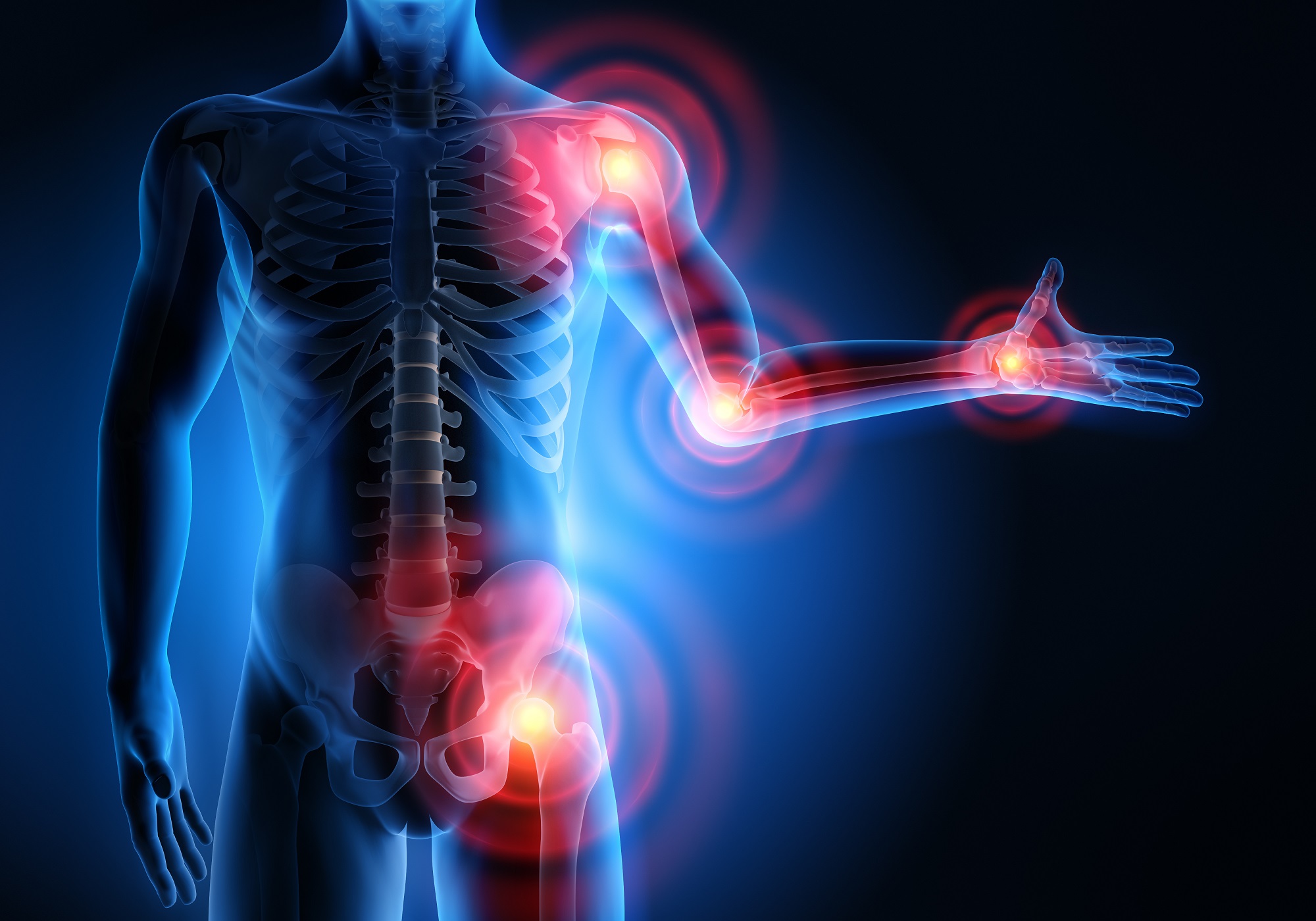The term arthritis refers to something that raises many questions, including similarities with other medical conditions, symptoms that allow it to be recognised and possible remedies. In the following we will look at all these points in depth, so that each question can be answered.
Arthritis is a chronic inflammatory condition affecting the joints. More than one can be involved, both large and small. It is often accompanied by a number of other symptoms, such as swelling, local redness, pain, joint stiffness that may result in functional loss, and fever.
Often the assonance with the word ‘arthrosis’ creates confusion about these two diseases, to the point where it is difficult to distinguish one from the other, despite the fact that two distinctly different diseases are referred to. What they have in common is their rheumatic character and the fact that they both attack the joints, causing pain that results in difficulty in moving the limbs.
The difference mainly concerns the nature of the cause of this pain. In the case of arthritis, it is the continuous wear and tear to which the cartilage at the joint is subjected, which then gives rise to a degenerative process. The joint ends come together abnormally, until they are in direct contact and cause pain that persists during use and decreases at rest. The joints that are most likely to fall victim to arthrosis are the major ones, due to the most frequent stresses. For example, hips, knees, hands, feet and shoulders.
Arthrosis, on the other hand, is an autoimmune disease of an inflammatory nature, and is chronic. It occurs irrespective of the subject’s age, without a specific correlation with any type of factor and usually develops bilaterally, affecting hands, feet, wrists and ankles. In this case, pain is constant, as is joint stiffness. In addition, swelling may occur.
What are the symptoms of arthritis

As we said before, the symptoms caused by arthritis are not constant in their manifestation, which depends very much on the circumstances. This is why they can occur intermittently but throughout the course of a lifetime, alternating between periods of strong intensity and a latency that can last for years.
Mainly, physical pain includes pain in the joints, which may stiffen and produce noises during movement. Visually they may swell, redden and feel hot. In extreme cases, swelling or deformity may occur. The person will also be prone to fatigue more easily and the inflammation may cause a rise in body temperature.
But the psychological symptoms that this condition can produce should not be overlooked, providing fertile ground for the onset of emotional problems such as anxiety and depression, caused by feeling useless, not autonomous and powerless in the face of the progress of the disease. Consequently, difficulties may arise at a social level, such as a tendency to isolate oneself, at work or at school, and all this results in a worsening of the quality of life in the broadest sense.
The formulation of the diagnosis is carried out by the rheumatologist who, after collecting anamnestic data, undertakes the clinical assessment of the patient during an examination to identify the signs and symptoms revealing the presence of the disease. After the observation, examinations are carried out using laboratory instruments, such as urine tests, synovial fluid tests, X-rays, CT scans, MRI scans and arthroscopy, which analyses the cartilage and ligaments. Finally, more specific tests will be carried out to reveal the nature of the arthritis and, depending on the area affected, specialist doctors may intervene to further investigate the patient’s condition.
You may also like
Remedies and treatments of arthritis
There are about a hundred different forms of arthritis, all of which fall under the umbrella of rheumatic diseases and together rank first among the chronic diseases that most frequently cause disability. This is especially true for the elderly, but some early forms can also affect young people of around 30 years of age. In… Continue reading Remedies and treatments of arthritis
Understanding Treatment Options for Lung Cancer
The treatment of lung cancer has advanced significantly over the past decades, offering new hope and improved outcomes for many patients. While the approach depends on the type and stage of cancer, as well as a person’s overall health, the primary goals are to remove or control the tumor, alleviate symptoms, and prolong life with… Continue reading Understanding Treatment Options for Lung Cancer
Recognizing the Symptoms of Lung Cancer
Lung cancer is one of the most common and serious forms of cancer, affecting people worldwide regardless of gender, age, or background. It develops when abnormal cells in the lungs grow uncontrollably, forming tumors that interfere with normal breathing and oxygen exchange. Detecting the symptoms early is crucial, as early diagnosis often leads to more… Continue reading Recognizing the Symptoms of Lung Cancer
Exploring the Treatment Options for Psoriasis
Psoriasis treatment aims to reduce inflammation, slow down excessive skin cell growth, and manage flare-ups. Although there is currently no cure, advances in medical research have made it possible for most people with psoriasis to lead comfortable, fulfilling lives. The choice of therapy depends on the severity of symptoms, the type of psoriasis, and individual… Continue reading Exploring the Treatment Options for Psoriasis
Understanding the Symptoms of Psoriasis
Psoriasis is a chronic inflammatory skin condition that affects millions of people worldwide. It occurs when the body’s immune system accelerates the skin cell production cycle, causing cells to build up rapidly on the surface. These excess cells form scaly, inflamed patches that can be both physically uncomfortable and emotionally distressing. Recognizing the symptoms early… Continue reading Understanding the Symptoms of Psoriasis
